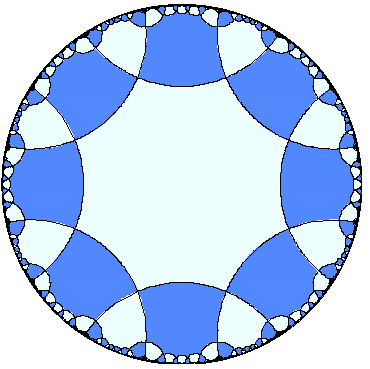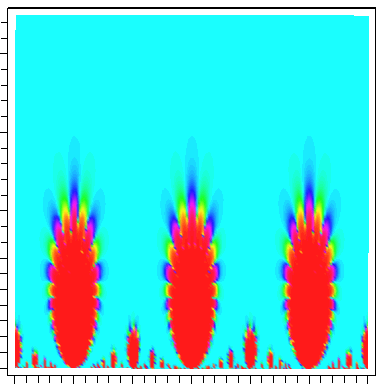
Automorphic functions and Uniformization
The line C ∪{∞} is topologically just a sphere, which is positively curved. (The precise definition of Gaussian curvature Kcan be found in any basic differential geometry text.) We were able to parameterize an elliptic curve by using elliptic functions on the complex plane. These were periodic with respect to a tiling of the plane by parallelograms. This shows that elliptic curve can be given a metric which is flat i.e. has zero curvature. For a compact surface X with genus g ≥ 2, the Gauss-Bonnet theorem that says the total curvature






 Z} and {m + nτ′∣m,n
Z} and {m + nτ′∣m,n  Z} are isomorphic if and only if
j(τ) = j(τ′).
This is a
nonconstant meromorphic function on H satisfying
Z} are isomorphic if and only if
j(τ) = j(τ′).
This is a
nonconstant meromorphic function on H satisfying


In other words j is invariant under the group generated by translations τ → τ + 1 and the inversion τ →-1∕τ (which is abstractly PSL2(Z)). Here we give a graph of j , where these symmetries are in evidence (colours corresponds to values of Re(j(τ)) with red corresponding to larger values).

Return to first page. Go to next page.